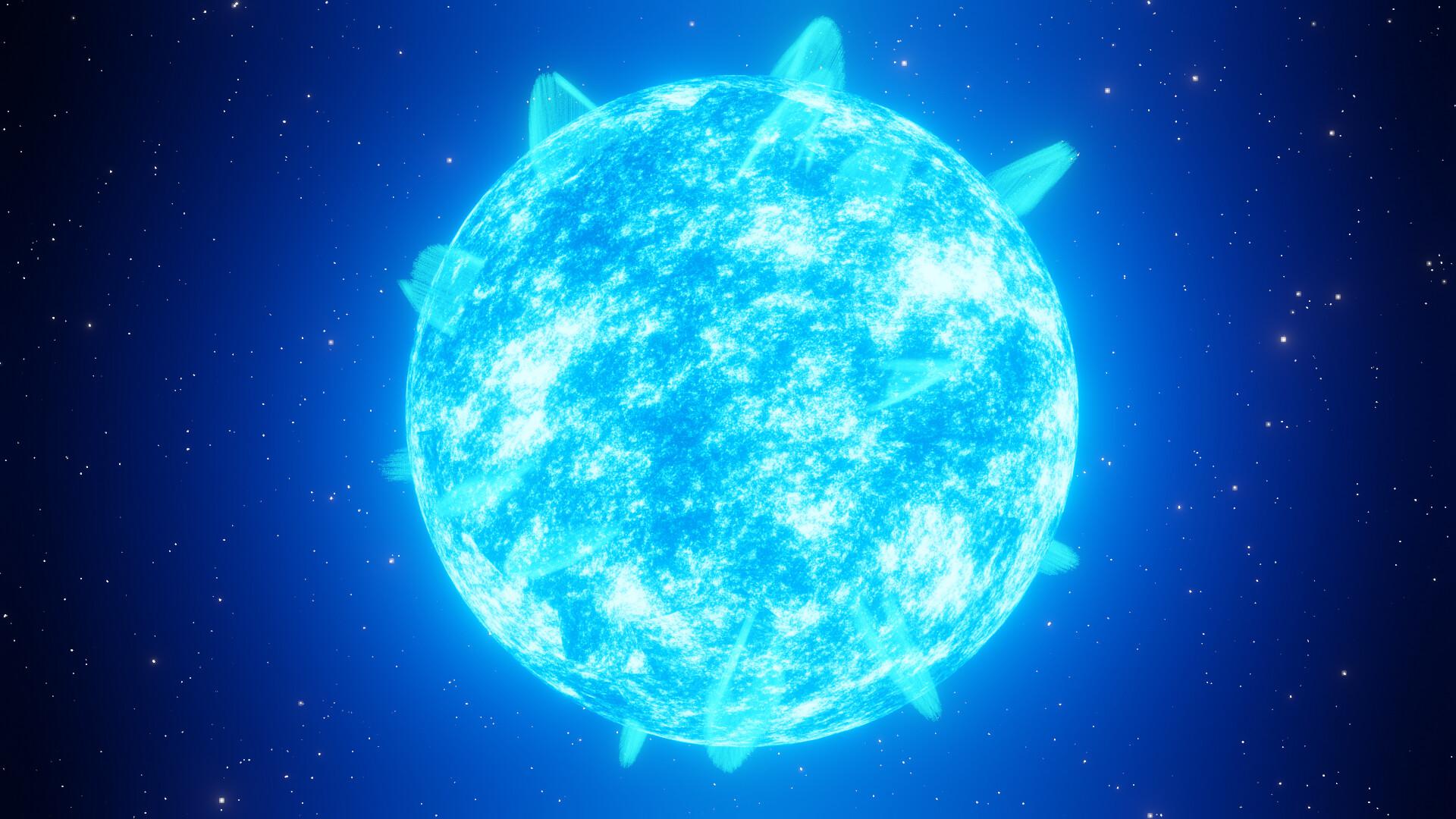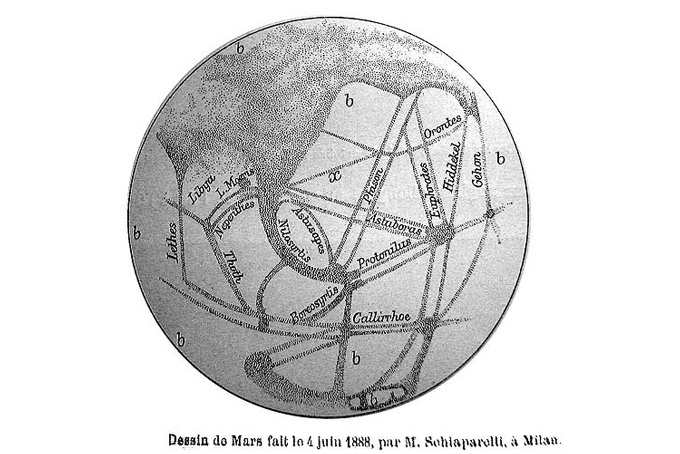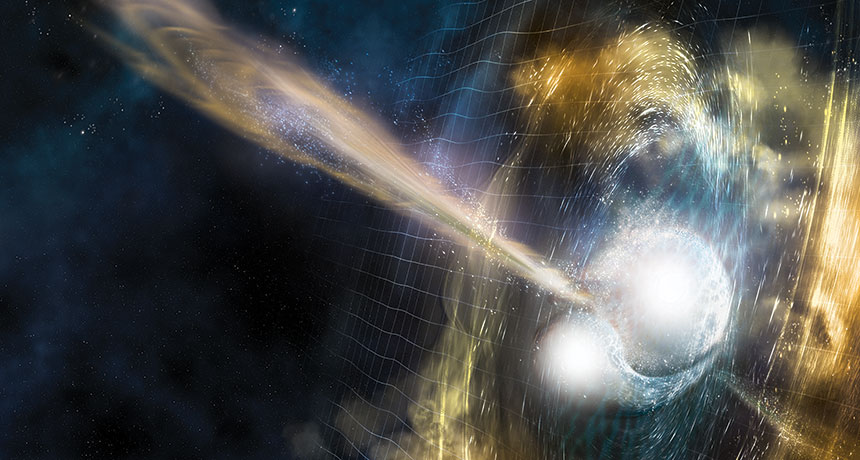There is an opinion that science is an activity in which you need to deal exclusively with cold and irrefutable facts. And flights of imagination are allegedly inappropriate, and are the prerogative of philosophers and poets. On the other hand, as Albert Einstein shrewdly remarked, “imagination is more important than knowledge”. Knowledge, according to the great scientist, is limited by what we know now, while imagination covers the whole world, stimulating progress. The same is the case with science: imagination has often served as a prelude to revolutionary advances in knowledge, changing humanity’s view of the world and discovering new technologies.

Astrophysicists and theoretical physicists very often use their imagination to represent complex processes, and sometimes such thought experiments turn out to be quite successful. But it happens that the imagination of scientists fails, which slows down the disclosure of the secrets of nature. Reality often turns out to be strikingly different from the theoretical calculations in the minds of researchers. In this article, we have collected the TOP 5 mistakes of the scientific imagination about space.
Composition of stars
The philosophy of the French philosopher Auguste Comte has misled many scientists. The greatest flaw in his imagination was an example of what science could not determine–the chemical composition of stars. Comte argued in 1835 that the determination of the composition of the interior of the luminaries will forever remain beyond human knowledge. According to him, scientists can study their size, shape and movements, but their chemical composition will always be the greatest mystery. He also believed that the temperature of the stars would also always be hidden from us.

However, a few decades later, a newfangled technology called spectroscopy allowed astronomers to analyze the colors of light emitted by stars. Since each chemical element emits or absorbs certain frequencies of the light spectrum, each set of colors is like a chemical fingerprint — an unmistakable indicator of the identity of the element. Thus, the use of a spectroscope to observe starlight made it possible to determine the chemical composition of stars. And this Comte considered impossible.
Channels on Mars
Sometimes the imagination fails more because of its overabundance than of its absence. In the case of the never-ending drama about the possibility of life on Mars, the famous channels of this planet turned out to be the fruit of a hyperactive scientific imagination. For the first time the term “Martian channels” was introduced by the Italian astronomer Giovanni Schiaparelli. Their appearance hinted that Mars might be inhabited. “The channels are dug, so someone dug them,” British astronomer Norman Lockyer also came to this conclusion later in 1901. Soon astronomers presented a complex system of channels supposedly transporting water from the Martian poles to thirsty megalopolises on the equator.

However, with the advent of more advanced telescopes, faith in the Martian channels eventually faded. It was just Martian winds carrying dust and sand across the surface. Thus, it turned out that light dust and dark sand stripes were arranged in a deceptive way for people with excessive imagination.
The Earth Age
In the mid-19th century, Lord Kelvin (William Thomson) calculated that the age of the Earth is a little more than 100 million years. Kelvin calculated his estimate, assuming that the Earth was born as a molten rocky mass, which then cooled to its current temperature. Moreover, Kelvin believed that the core of the Earth is solid. One of Kelvin’s former assistants, John Perry, showed in 1895 that the flow of heat deep inside the Earth could mean that its bowels are viscous. This explains not only plate tectonics, but also the older age of the planet.

In 1948, Claire Patterson, in collaboration with George Tilton, measured the age of magmatic rocks using uranium-lead and lead-lead methods. Assuming that meteorites are residual material from the time of the formation of the Solar System and, thus, measuring the age of one of the meteorites, it is possible to measure the age of the Earth. In 1953, Patterson took samples from the Canyon Diablo meteorite and estimated the age of the Earth at 4.5 billion years. Then the estimate was refined to 4.55 billion years. This figure has remained unchanged since 1956.
Neutrino detection
In the 1920s, most physicists were convinced that nature consisted of only two basic particles: positively charged protons and negatively charged electrons. However, some have suggested the possibility of the existence of a particle without an electric charge. The proposal for such a particle came in 1930 from the Austrian physicist Wolfgang Pauli. He suggested that a particle without a charge could explain the suspicious loss of energy observed with beta radioactivity particles. Pauli’s idea was mathematically developed by Fermi, who called the neutral particle a neutrino.
Physicists Hans Bethe and Rudolf Peierls checked Fermi’s calculations. And they came to the conclusion that neutrinos are so easily swept through matter that it is almost impossible to detect them. Unless you need a tank with liquid hydrogen 6 billion km wide. “It is almost impossible to observe neutrinos,” concluded Bethe and Peierls. In the 1950s, Frederick Raines and Clyde Cowan used nuclear reactors to pinpoint the existence of neutrinos. Later, Raines admitted that he was looking for a way to detect neutrinos precisely because everyone told him that it was impossible to detect it.
Gravitational waves
Nowadays astrophysicists are crazy about gravitational waves, which can reveal all sorts of secrets of the distant Universe. Thanks to Einstein’s general theory of relativity, scientists were able to explain the existence of gravitational waves. But Einstein was not the first to propose this idea.
In the 19th century, James Clerk Maxwell developed a mathematical explanation of electromagnetic waves and suggested that gravity could similarly cause waves in a gravitational field. However, he couldn’t figure out how. Later, other scientists, including Oliver Heaviside and Henri Poincare, speculated about gravitational waves. Many physicists began to doubt that such waves exist. And if they do exist, they couldn’t even imagine a single way to prove it.

Shortly before Einstein completed his general theory of relativity, the German physicist Gustav Mee stated that the gravitational radiation emitted by any particle with an oscillating mass is so weak that it is unthinkable to detect it in any way.Even Einstein had no idea how to detect gravitational waves. Although he developed a mathematical description of them in an article in 1918. In 1936, he decided that general relativity could not predict gravitational waves at all. As we now know, Einstein was wrong.
Follow us on Twitter to get the most interesting space news in time
https://twitter.com/ust_magazine
